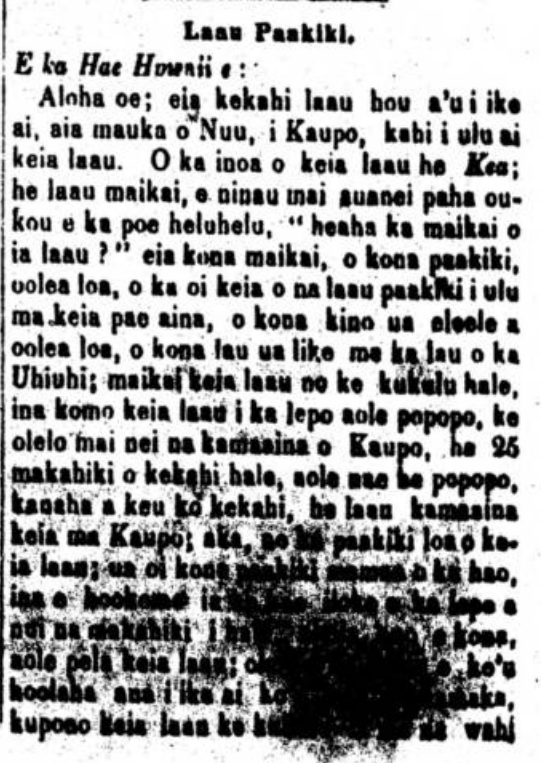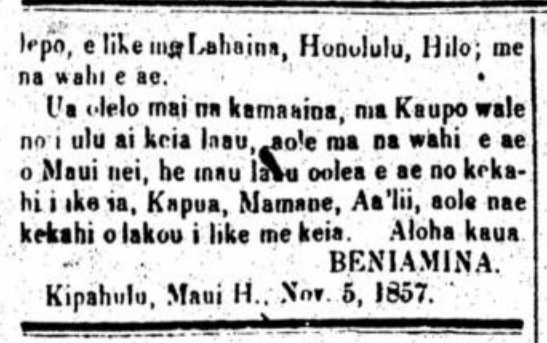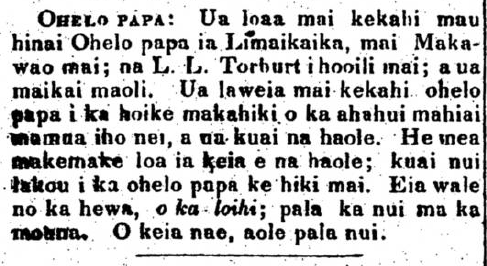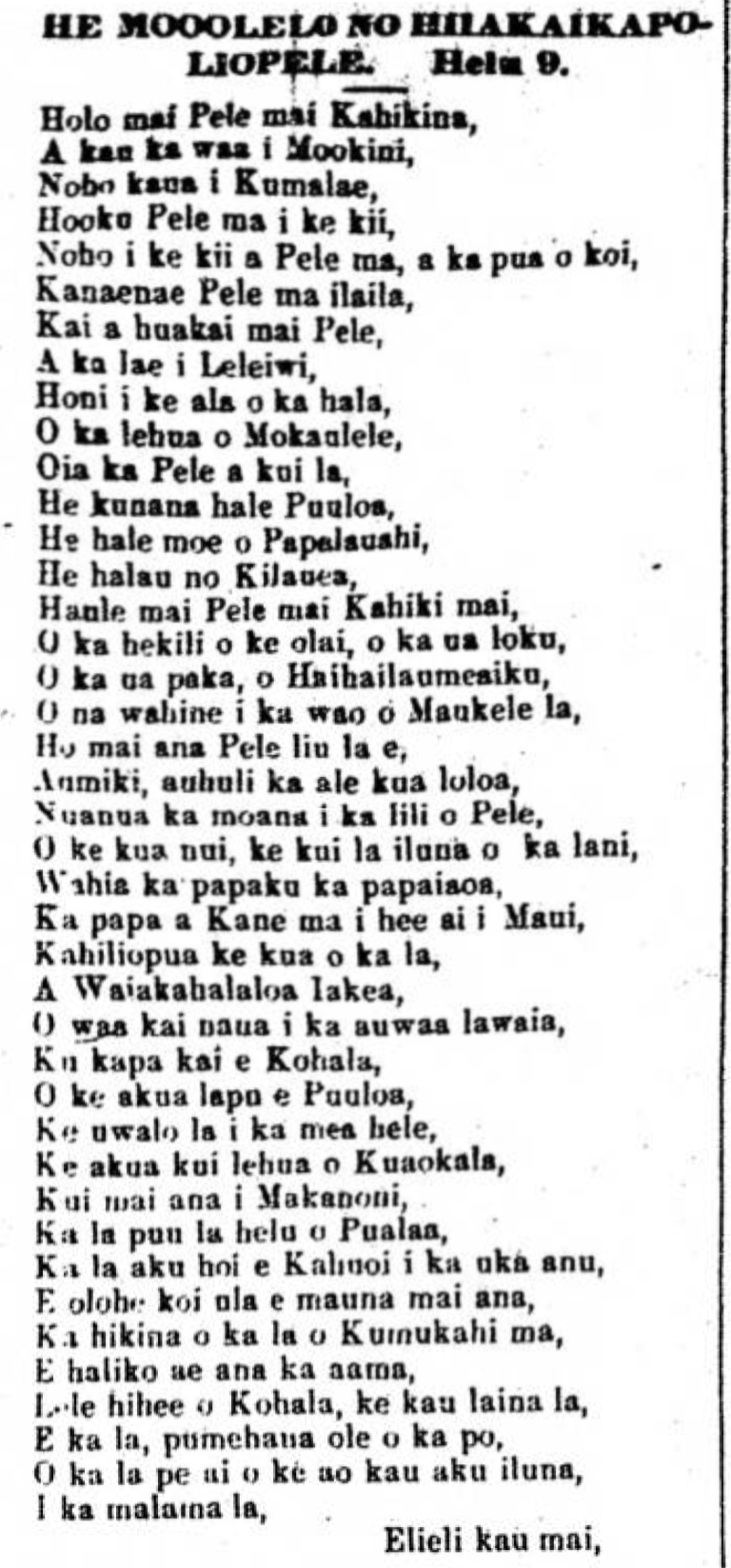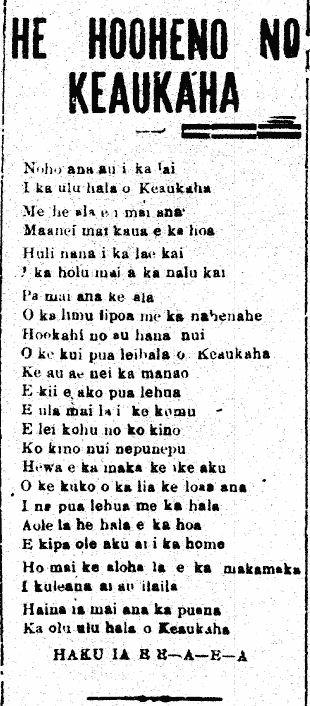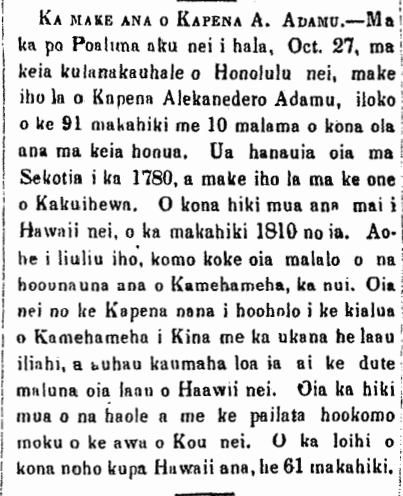Strong Wood.
O Hae Hawaii:
Aloha oe; here is a new tree that I have seen; this tree grows in the uplands of Nuu, in Kaupo. The name of this tree is Kea; it is a fine tree. You readers will perhaps ask, “What makes this tree a fine tree?” This is why, because of its strength; it is very solid. This is the strongest tree that grows in this archipelago. Its body is black and very rigid, and its leaves are like those of the Uhiuhi This is good wood for building houses; if the wood is placed in earth, it does not rot. The kamaaina of Kaupo say that some houses are 25 years old yet have no rot; some are forty years old or more. This is a familiar tree in Kaupo; and as for the strength of this wood, it is stronger than iron. Should iron have been placed in earth many years ago, its form will change, not so with this wood. That is why I am getting this out, so that my friends may know that this wood is good for standing in…
(Hae Hawaii, 11/18/1857, p. 133)
[The last few lines above were not legible online. It will be a great day when the images digitized from the originals are uploaded on Papakilo.]
…dirt, like in Lahaina, Honolulu, Hilo, and other places.
The kamaaina say that this wood only grows in Kaupo, and not in other places here on Maui. There are other strong woods that are known: Kapua, Mamane, Aalii, but none are like this. Aloha kaua.
BENIAMINA.
Kipahulu, Maui, H., Nov. 5, 1857.
[Might the Kea referred to here be talking about Uhiuhi?]
(Hae Hawaii, 11/18/1857, p. 134)

